How to Write a Job Acceptance Letter with a Template
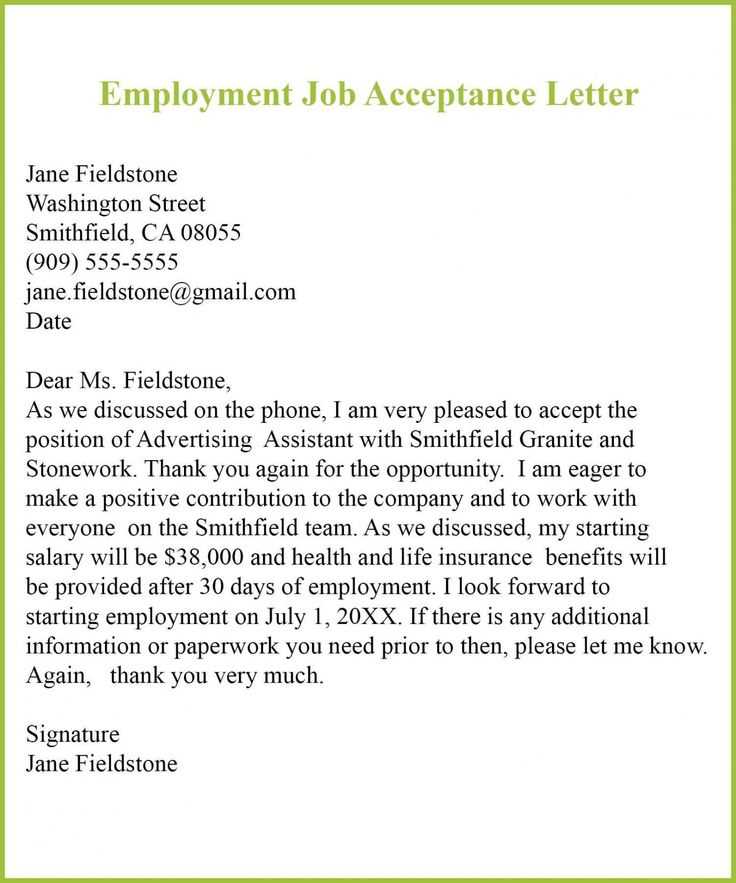
When you receive a formal offer to join a company, it’s essential to respond in a professional manner. Your reply should reflect your appreciation for the opportunity while also confirming your commitment to the position. Crafting a clear and polite message is crucial to leave a positive impression and establish a strong foundation for your future role.
Expressing gratitude is an important component of your response. It shows respect for the offer and the time the employer invested in the selection process. Additionally, your message should communicate excitement about the new chapter you’re about to begin while maintaining a professional tone throughout.
In this guide, we’ll explore the key elements to include in your response, how to structure your message effectively, and the best way to convey enthusiasm. With a well-crafted reply, you can make the transition to your new role smooth and professional.
Job Acceptance Letter Essentials
Responding to an employment offer requires a clear and professional approach. A well-crafted message helps you confirm your intent to join the company while conveying appreciation for the opportunity. It’s important to include essential details that ensure both you and the employer are on the same page about expectations moving forward.
Key Elements to Include
- Confirmation of the offer – Clearly state your intent to accept the role and express your enthusiasm.
- Start date – Specify the agreed-upon date when you will begin your new position.
- Expressing gratitude – Show appreciation for the opportunity and the confidence the employer has in you.
- Contact information – Provide your phone number or email in case any further details are required.
Best Practices for Structure
- Keep it professional – Use a formal tone throughout the response.
- Be concise – Ensure your message is clear and to the point, avoiding unnecessary details.
- Review details – Double-check the terms of the offer, ensuring that both parties are aligned before sending your response.
Understanding the Purpose of Letters
Responding to an employment offer is a crucial step in formalizing your agreement with a company. This type of response serves as an official acknowledgment of the opportunity extended to you. It not only confirms your acceptance but also demonstrates your professionalism and appreciation for the role. A well-constructed response ensures that both you and the employer are clear on the terms of your upcoming collaboration.
The primary purpose of this communication is to convey your positive decision, affirm your commitment, and set the stage for a smooth transition into your new responsibilities. It marks the beginning of a formal relationship and establishes the groundwork for future communication, including the logistics of starting your new position.
Crafting a Professional Response
When responding to an employment offer, it’s essential to maintain a formal tone that reflects both your professionalism and appreciation. A well-crafted reply not only confirms your decision to join the company but also sets the tone for a positive and collaborative relationship moving forward. The key to a successful response lies in clear communication, respect for the opportunity, and a strong demonstration of enthusiasm.
Important Elements to Include
- Gratitude – Express your sincere thanks for the offer and the confidence shown in your abilities.
- Commitment – Clearly state your intent to accept and participate in the agreed role.
- Start date – Include your availability and confirm the first day of work, as discussed.
Tips for a Polished Response
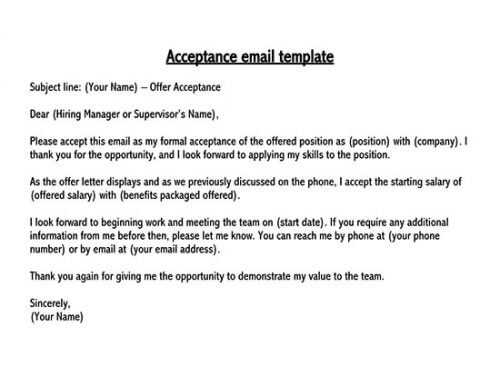
- Be concise – Keep your message to the point, while covering all necessary details.
- Use formal language – Avoid informal phrasing and ensure your response maintains a respectful tone throughout.
- Proofread – Always double-check your message to ensure it’s clear and error-free.
Key Elements to Include
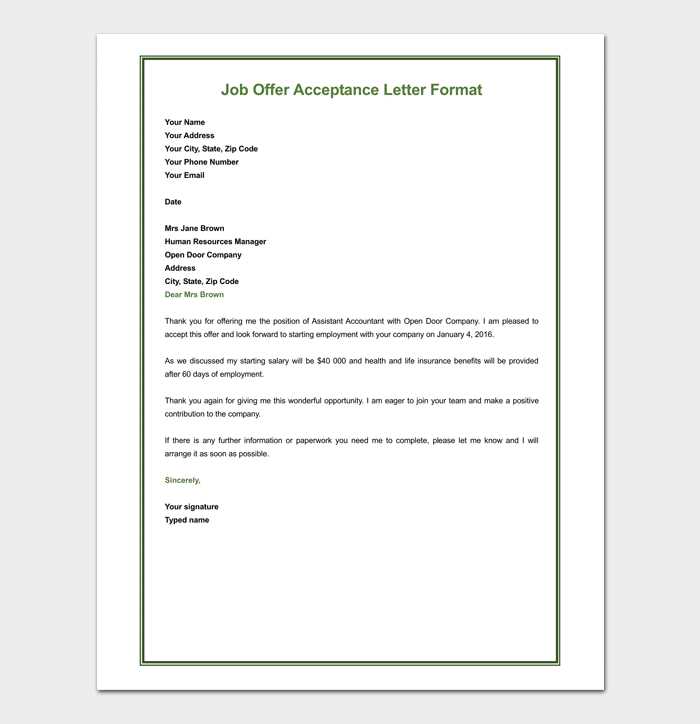
When drafting your response to an employment offer, it’s important to include several critical components that ensure clarity and professionalism. These key details help confirm your decision while also aligning expectations between you and your future employer. By including the right information, you demonstrate your commitment and make the process of starting your new role smoother for everyone involved.
Essential Information to Confirm
- Offer acknowledgment – Clearly express your decision to accept the opportunity, reaffirming your commitment.
- Start date – Confirm the first day you’ll be available to begin your new responsibilities.
- Appreciation – Take a moment to thank the employer for their trust and the opportunity to join the team.
Additional Considerations
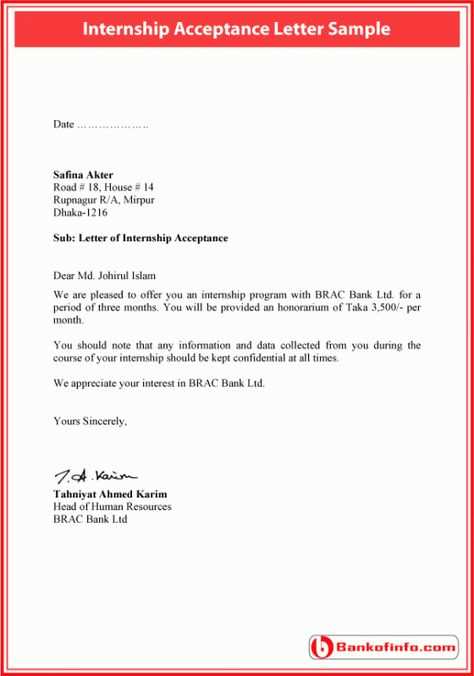
- Contact details – Include your preferred method of contact in case further discussion is needed.
- Any clarifications – If necessary, ask for clarification on any logistical matters before you begin your role.
Expressing Gratitude Effectively
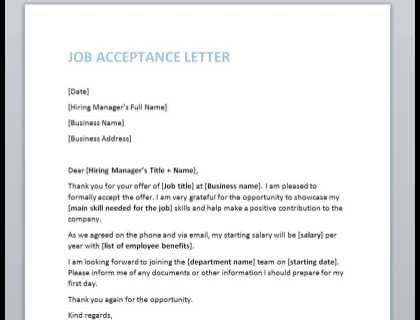
One of the most important aspects of responding to an employment offer is expressing genuine appreciation. A thoughtful acknowledgment of the opportunity helps reinforce positive feelings and shows that you recognize the effort the company made in selecting you. Gratitude not only strengthens your professional relationship but also sets the right tone for the start of your new role.
Ways to Show Appreciation
- Be sincere – Make sure your words reflect genuine gratitude, avoiding any overly casual phrasing.
- Personalize your message – Reference specific aspects of the offer or the company that you are excited about.
- Express enthusiasm – Convey your eagerness to contribute and be a part of the team.
When and How to Express Thanks
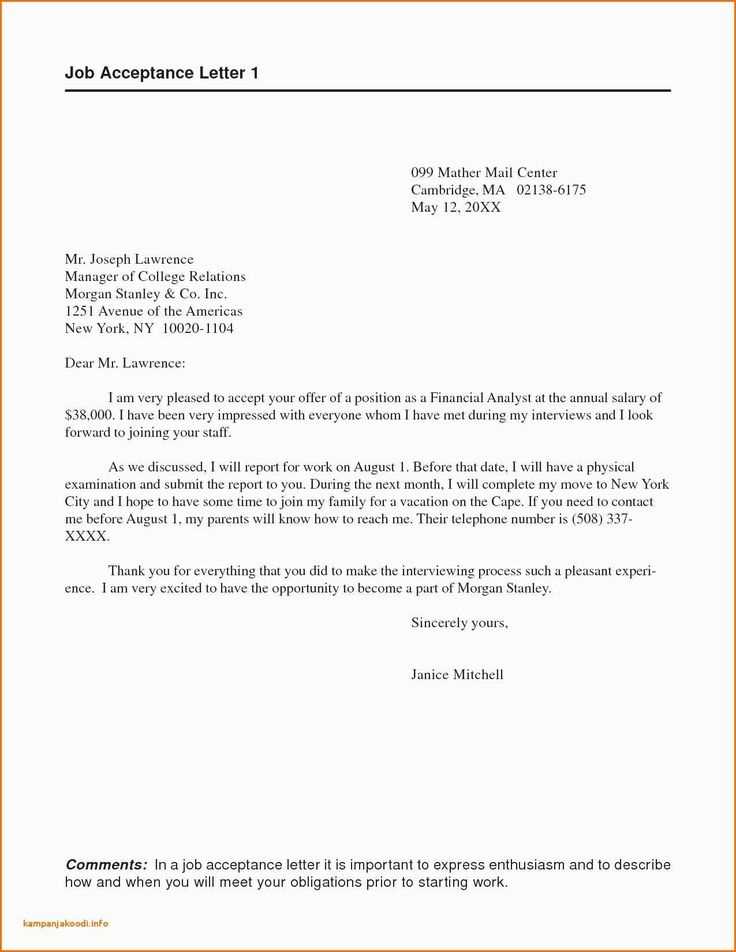
- Immediately after receiving the offer – A timely response shows professionalism and attentiveness.
- In the first paragraph – Start your response by thanking the employer before diving into other details.
- Reaffirm your commitment – Close with another expression of thanks and a positive note about starting your new role.
Best Ways to Convey Enthusiasm
When responding to an employment opportunity, it’s important to express your excitement in a way that feels both genuine and professional. Demonstrating enthusiasm not only shows your eagerness to begin the role but also reinforces your commitment to the organization. A well-articulated display of excitement can set the tone for your future success and integration into the team.
Effective Ways to Show Enthusiasm
- Use positive language – Words like “excited,” “thrilled,” or “delighted” help convey energy and eagerness.
- Highlight specific aspects – Mention particular elements of the role or company culture that appeal to you the most.
- Show long-term interest – Express your anticipation for growing within the company and contributing to its goals.
Keep It Balanced
- Stay professional – While enthusiasm is important, it’s essential to maintain a respectful and businesslike tone throughout.
- Be concise – While enthusiasm should shine through, avoid over-explaining or exaggerating to keep the message focused.
Proper organization and presentation are key to making a strong impression when crafting a formal response to an employment offer. How your message is structured can greatly influence the perception of your professionalism and attention to detail. By following a few simple guidelines, you can ensure that your communication is both clear and polished.
Essential Formatting Guidelines
- Start with a formal greeting – Address the recipient respectfully, using their title and last name where appropriate.
- Maintain a clear structure – Organize your message with well-defined paragraphs, making it easy to read and understand.
- Use appropriate font and size – Stick to standard fonts like Arial or Times New Roman, with a size of 10 to 12 points for readability.
Final Touches
- Include a professional closing – Sign off with a courteous phrase such as “Sincerely” or “Best regards.”
- Check for consistency – Ensure that the tone, font, and formatting are consistent throughout the document.
Guidelines for Clear and Concise Writing
Effective communication is vital when expressing agreement or confirming a new position. Clarity and brevity help ensure that the message is understood quickly and without confusion. By focusing on the essentials and avoiding unnecessary details, you can deliver a professional response that reflects both competence and respect for the reader’s time.
Key Principles to Follow
| Tip | Explanation |
|---|---|
| Avoid jargon | Use simple, everyday language to make your message accessible to a wider audience. |
| Be direct | Stick to the point without deviating into unrelated subjects or over-explaining. |
| Use short paragraphs | Breaking your content into smaller chunks makes it more digestible and easier to read. |
| Focus on key details | Highlight the most important elements of the message, avoiding excess information. |